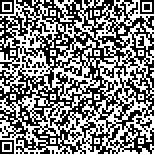| 引用本文: | 廖萍,葛渊源,曹萌,赵璐,贾国舒,张景辰,陈桂良.美国FDA鼻用制剂监管科学研究进展及启示[J].中国现代应用药学,2023,40(20):2766-2773. |
| LIAO Ping,GE Yuanyuan,CAO Meng,ZHAO Lu,JIA Guoshu,ZHANG Jingchen,CHEN Guiliang.Progress and Enlightenment of FDA Regulatory Science Research on Nasal Preparations[J].Chin J Mod Appl Pharm(中国现代应用药学),2023,40(20):2766-2773. |
|
| 本文已被:浏览 3670次 下载 1322次 |

码上扫一扫! |
|
|
| 美国FDA鼻用制剂监管科学研究进展及启示 |
|
廖萍1, 葛渊源1, 曹萌1, 赵璐2, 贾国舒3, 张景辰4, 陈桂良1
|
|
1.上海药品审评核查中心, 上海 201210;2.甘肃省药品监督管理局审核查验中心(甘肃省疫苗检查中心), 兰州 730030;3.中国药科大学, 南京 211198;4.国家药品监督管理局药品审评检查长三角分中心, 上海 201210
|
|
| 摘要: |
| 目的 介绍美国食品药品监督管理局(Food and Drug Administration,FDA)鼻用制剂监管科学进展,为中国鼻用制剂开发、生产、质量控制、监管提供参考和借鉴。方法 通过对法规和文献进行翻译、整理与研究,介绍FDA关于鼻用制剂的监管科学研究项目和最新进展,并分析目前鼻用制剂发展中遇到的难点和未来的发展方向。结果 FDA鼻用制剂监管科学主要方向为评价潜在的生物等效性方法作为比较临床终点生物等效性研究的替代方案,运用数字技术建立计算机模型研究鼻部吸收影响因素、药动学和药效学特征,以及儿童用药研究、鼻脑递送等,旨在开发新工具、新方法、新标准,为优化监管策略、提高监管效率提供科学依据。结论 本文总结了FDA鼻用制剂监管科学最新研究成果,为监管机构管理人员提供参考,为提升中国药品监管质量和效率、实现国际接轨提供新思路与新方法。 |
| 关键词: 鼻用制剂 鼻腔给药 FDA 监管科学 证据权重法 |
| DOI:10.13748/j.cnki.issn1007-7693.20231873 |
| 分类号:R951 |
| 基金项目:上海市药品监督管理局药品监管科学研究课题项目(LX-2023-04) |
|
| Progress and Enlightenment of FDA Regulatory Science Research on Nasal Preparations |
|
LIAO Ping1, GE Yuanyuan1, CAO Meng1, ZHAO Lu2, JIA Guoshu3, ZHANG Jingchen4, CHEN Guiliang1
|
|
1.Shanghai Center for Drug Evaluation and Inspection, Shanghai 201210, China;2.Center for Inspection of Gansu Drug Administration (Center for Vaccine Inspection of Gansu), Lanzhou 730030, China;3.China Pharmaceutical University, Nanjing 211198, China;4.Yangtze River Center for Drug Evaluation and Inspection of National Medical Products Administration, Shanghai 201210, China
|
| Abstract: |
| OBJECTIVE To introduce the scientific progress in the regulation of nasal preparations by the US Food and Drug Administration(FDA), and provide reference and inspiration for the development, manufacture, quality control and supervision of nasal preparations in China. METHODS Regulations and literature relevant to the nasal preparations were translated and collated, and research projects and latest developments of FDA regulatory science were introduced. The difficulties encountered in the development of nasal preparations and the future development direction were analyzed. RESULTS The main directions of FDA nasal regulatory science were to evaluate potential bioequivalence(BE) methods as an alternative to comparative clinical endpoint BE studies, to employ digital technology to establish computer models, to study the factors influencing nasal absorption, pharmacokinetics and pharmacodynamics characteristics, as well as pediatric drug use studies, nasal-brain delivery, and to develop new tools, new methods, and new standards. It provided a scientific basis for optimizing regulatory strategy and improving regulatory efficiency. CONCLUSION This article summarizes the latest research on the regulatory science of nasal preparation, provides a reference for the management personnel of regulatory agencies, and provides new ideas and new methods for improving the quality and efficiency of China's drug regulation and realizing international standards. |
| Key words: nasal preparation nasal delivery FDA regulatory science weight of evidence method |
